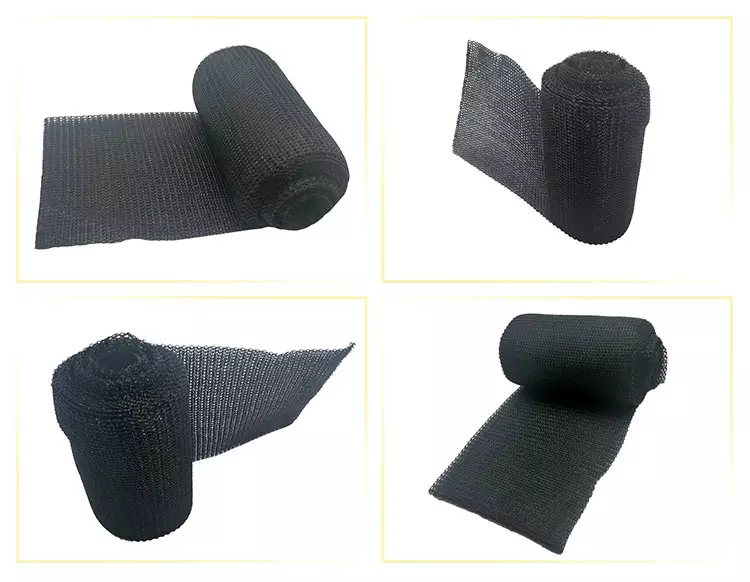Butyl Rubber Foil Tape An Essential Tool for Sealing and Insulation
In the realm of construction, insulation, and repair, the importance of effective sealing materials cannot be overstated. Among the various options available, butyl rubber foil tape stands out due to its unique combination of properties, making it a go-to choice for professionals and DIY enthusiasts alike. This article explores what butyl rubber foil tape is, its applications, benefits, and best practices for usage.
What is Butyl Rubber Foil Tape?
Butyl rubber foil tape is a specialized adhesive tape made from butyl rubber combined with a metal foil backing, often aluminum. Butyl rubber is a synthetic rubber known for its excellent adhesive qualities and resistance to moisture, gases, and temperature fluctuations. The foil backing enhances the tape's durability and provides additional protection against environmental factors. This combination enables the tape to serve a variety of purposes, from waterproofing to insulation.
Applications of Butyl Rubber Foil Tape
The versatility of butyl rubber foil tape allows it to be used in a wide range of applications
1. Roofing and Waterproofing One of the most common uses of butyl rubber foil tape is in roofing applications. It is employed to seal seams in roofing materials, ensuring that water cannot penetrate and cause leakage. Its waterproof properties make it an ideal choice for both flat and sloped roofs.
2. HVAC Systems In heating, ventilation, and air conditioning (HVAC) systems, butyl rubber foil tape is used to seal ductwork and prevent air leaks. This helps improve energy efficiency and maintain optimal temperatures within a building.
3. Insulation The tape can be used to seal insulation materials, ensuring a tight hold that prevents air and moisture from escaping. This is particularly important in energy-efficient construction, where maintaining interior temperatures is crucial.
4. Automotive Applications In the automotive industry, butyl rubber foil tape is used for sound dampening and sealing components, such as windows and body panels. Its adhesive qualities help reduce noise while protecting against moisture intrusion.
Benefits of Butyl Rubber Foil Tape
There are several advantages to using butyl rubber foil tape
butyl rubber foil tape

1. Excellent Adhesion The tape adheres strongly to a variety of surfaces, including metal, concrete, and wood. This ensures a long-lasting seal that can withstand various stresses.
2. Moisture Resistance Given its waterproofing capabilities, butyl rubber foil tape is perfect for applications where moisture resistance is paramount, such as roofing and plumbing.
3. Temperature Tolerance The tape can withstand a wide range of temperatures, making it suitable for both indoor and outdoor applications. It remains flexible in low temperatures and resists degradation in high temperatures.
4. Durability The foil backing adds an extra layer of protection, enhancing the tape's resistance to physical and chemical damage.
5. Ease of Use Butyl rubber foil tape is easy to handle and apply, requiring no additional adhesives or tools. It can be cut to size and applied directly to surfaces for immediate use.
Best Practices for Usage
To maximize the effectiveness of butyl rubber foil tape, consider the following best practices
1. Surface Preparation Ensure that the surface where the tape will be applied is clean, dry, and free from dust or debris. This will improve adhesion and prolong the tape's lifespan.
2. Proper Application Apply the tape with firm pressure to ensure a good seal. Overlap the edges where necessary to prevent any potential leaks.
3. Temperature Considerations Apply the tape within the recommended temperature range for optimal performance, avoiding extreme conditions that might affect adhesion.
4. Storage Store the tape in a cool, dry place to prevent it from degrading over time.
In conclusion, butyl rubber foil tape is an invaluable tool for anyone involved in construction, repair, or maintenance. Its unique properties enable it to provide robust, long-lasting seals in a wide range of applications, making it a staple in both professional and DIY settings. Understanding its uses and benefits can lead to more efficient and effective projects, ultimately saving time and resources.
-
XIANGFAN Rubber Tape-Ultimate Solutions for All Your Insulation NeedsNewsJun.24,2025
-
XIANGFAN Rubber Tape-Protection for Industrial and Residential ApplicationsNewsJun.24,2025
-
XIANGFAN Rubber Tape: Superior Safety and Sealing for Demanding EnvironmentsNewsJun.24,2025
-
XIANGFAN Rubber Tape: Reliable Solutions for Every Electrical ChallengeNewsJun.24,2025
-
XIANGFAN Electrical & Industrial Tape: Powering Reliability Across IndustriesNewsJun.24,2025
-
XIANGFAN Electrical & Industrial Tape: Excellence in Every ApplicationNewsJun.24,2025
